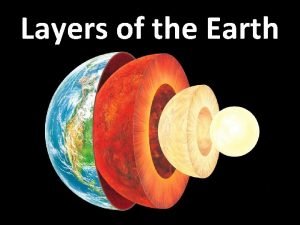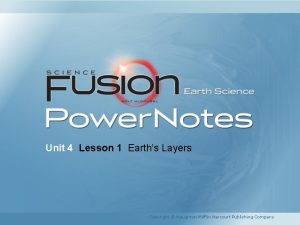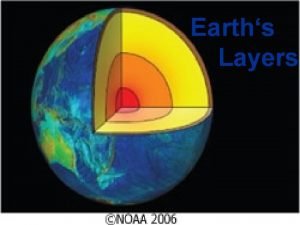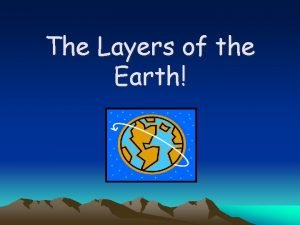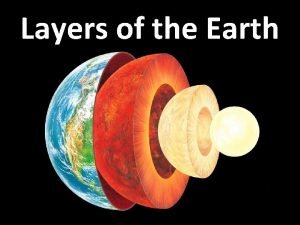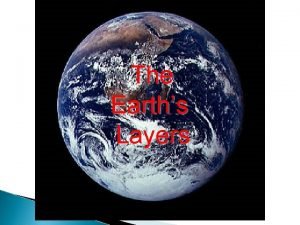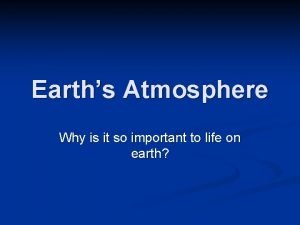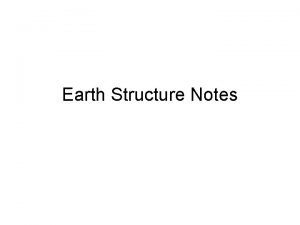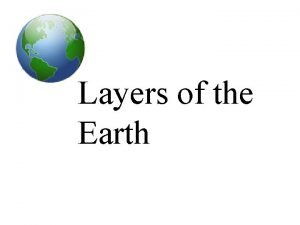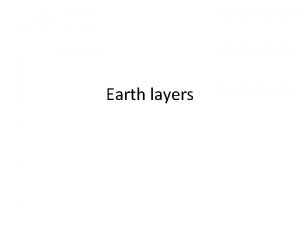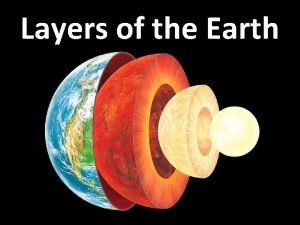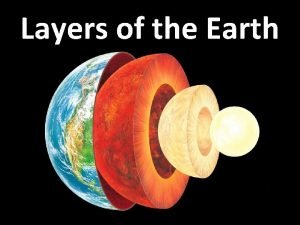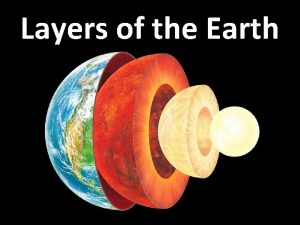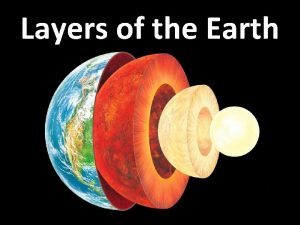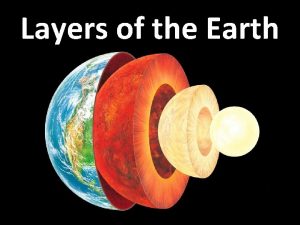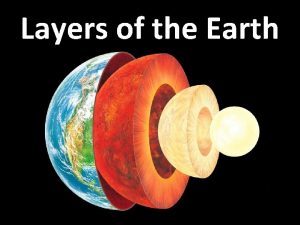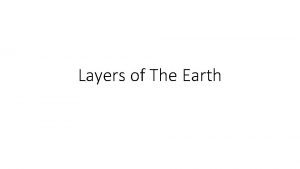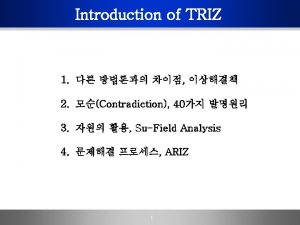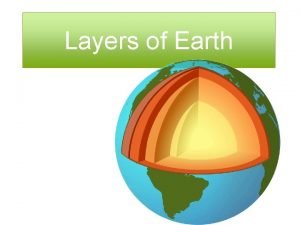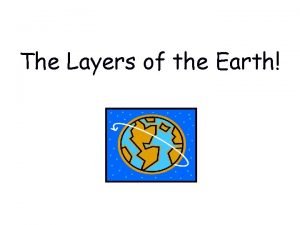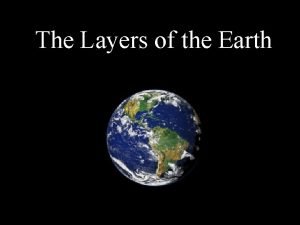Layers of the Earth Watch the movie trailer



















- Slides: 19

Layers of the Earth

Watch the movie trailer for Journey to the Center of the Earth. Identify characteristics that you think are true and those you think are not true. Be prepared to share. https: //www. youtube. com/watch? v= r. Qx 2 w. Lyagk 4

Essential Question: How are layers of the Earth different from one another? Standard: S 6 E 5 a. Compare and contrast the Earth’s crust, mantle, and core including temperature, density, and composition.

The Earth is made up of 4 main layers: Crust Mantle Inner Core Outer Core

Think of the layers of the Earth like the layers of a cake.

Use the Layers of the Earth Foldable to take notes

Land Ocean O ust r C c i cean Contine ntal Crust st

Crust Land Ocean st u r C c i n Ocea Continen tal Crust • Thinnest layer of the Earth that ranges from only 2 miles in some areas of the ocean floor to 75 miles deep under mountains • Made up of large amounts of silicon and aluminum • Two types of crust: oceanic crust and continental crust • Composed of plates on which the continents and oceans rest

The Earth’s crust is like the skin of an apple. Turn to an elbow partner and discuss why this statement is true. Next, come up with another example.

Upper Mantle Convection Currents Lower Mantle Middle Mantle

Upper Mantle Convection Currents Middle Mantle Lower Mantle • Solid but capable of flow (like hot asphalt or fudge) • Thickest layer of the Earth (making up 70% of the Earth’s mass) • The hot material (magma) in the mantle rises to the top of the mantle, cools, then sinks, reheats, and rises again. These convection currents cause changes in the Earth’s surface

Outer Core Inner Core

Outer Core • Molten (liquid) metal that is about 4, 700°C (8, 500°F) • Located about 1, 800 miles beneath the crust and is about 1, 400 miles thick • Composed of the melted metals nickel and iron • The spinning around the inner core causes Earth’s magnetic field

Inner Core • Solid sphere composed mostly of iron • It is believed to be as hot as 6, 650°C (12, 000°F) • Heat in the core is probably generated by the radioactive decay of uranium and other elements • It is solid because of the pressure from the outer core, mantle, and crust compressing it tremendously

Crust Mantle Outer Core Liquid Lithosphere – Crust and Upper Layer of the Mantle (asthenosphere) that consists of hot rock of tar -like consistency, which slowly moves Inner Core Solid

Density and Pressure increase as depth increases

Temperature, Density and Pressure increases as depth increases Add this statement to the arrow going down on your foldable.

Which layer of the Earth has the greatest temperature, pressure, and density? Core

Mr. Lee’s Layers of the Earth Rap
 Crust and mantle rap
Crust and mantle rap The core movie trailer
The core movie trailer Boy in the striped pajamas movie trailer
Boy in the striped pajamas movie trailer Plot for flowers for algernon
Plot for flowers for algernon Coco movie trailer
Coco movie trailer Charlotte horror movie trailer
Charlotte horror movie trailer Windows live movie maker transitions
Windows live movie maker transitions Crust outer core inner core mantle
Crust outer core inner core mantle Earth air layers
Earth air layers Earth's layers
Earth's layers Outer layer
Outer layer The outer core is made up of
The outer core is made up of Earth's layers questions
Earth's layers questions Structural layers of earth
Structural layers of earth Layers of atmosphere
Layers of atmosphere Which of earth's layers is the thickest
Which of earth's layers is the thickest Layers of the earth
Layers of the earth Picture of alfred wegener
Picture of alfred wegener Plate tectonics jeopardy
Plate tectonics jeopardy Asthenosphere temperature
Asthenosphere temperature

